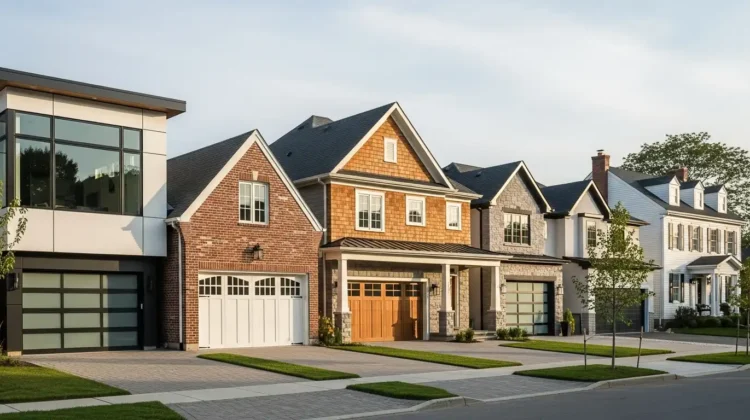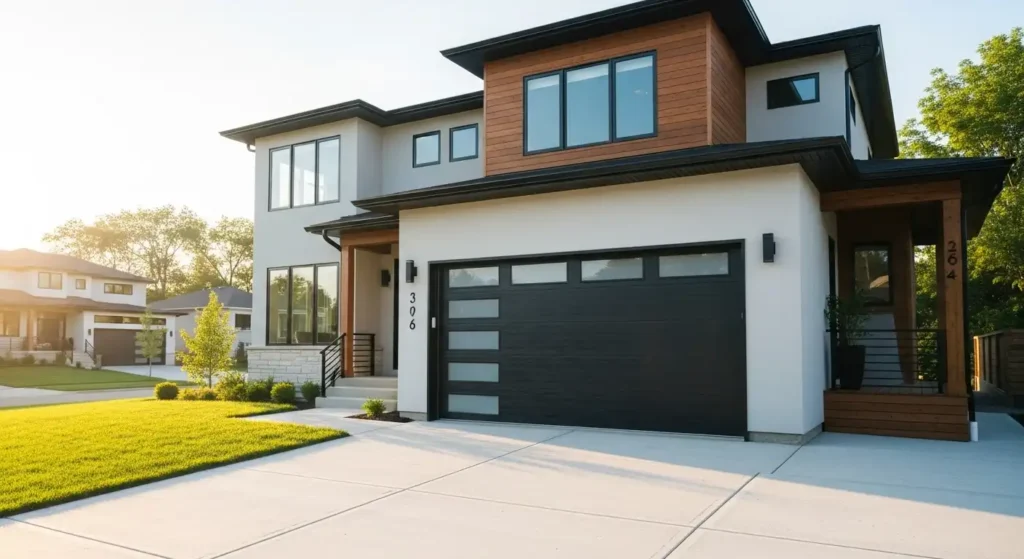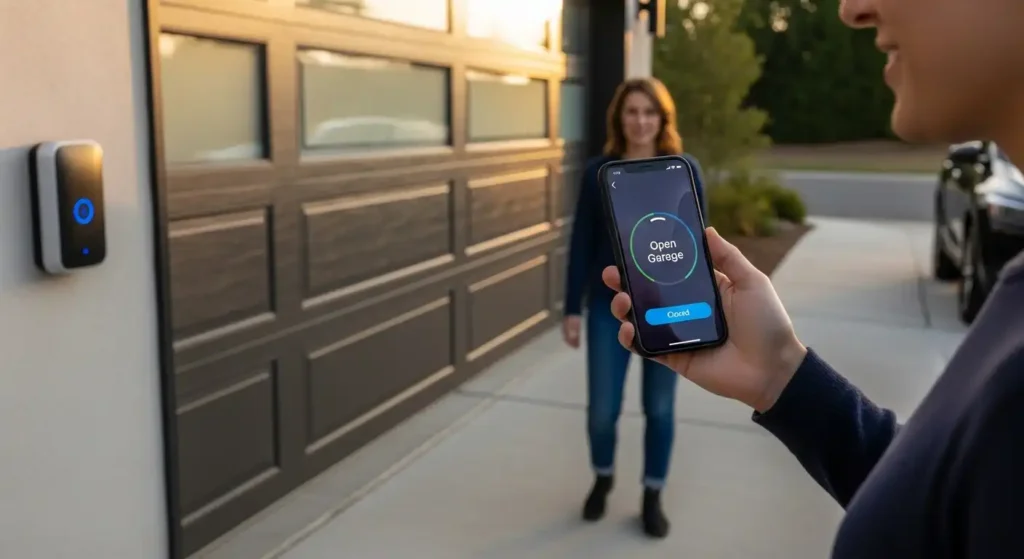
Your garage door is one of the most frequently used parts of your home — opening and closing hundreds of times each year. Yet it’s also one of the most neglected when it comes to regular care. Many homeowners assume their garage door system will continue to work indefinitely without much attention. Unfortunately, that assumption often leads to costly repairs, safety risks, and even premature replacement. Understanding the hidden costs of neglecting garage door maintenance can save you hundreds or even thousands of dollars in the long run.
Why Regular Garage Door Maintenance Matters

A garage door isn’t just a large piece of moving metal or wood — it’s a complex mechanical system made up of hundreds of parts, including springs, rollers, hinges, and safety sensors. Each time you use the door, these components experience friction, stress, and wear. Without proper lubrication, tightening, and cleaning, small issues can quickly become major problems.
According to the U.S. Department of Energy, garage doors also play a crucial role in maintaining a home’s insulation and energy efficiency. Neglecting seals and insulation can lead to air leaks, higher energy bills, and unnecessary strain on your HVAC system — hidden costs of neglecting garage door maintenance.
1. Expensive Emergency Repairs
Skipping regular maintenance may seem harmless — until something breaks. Garage door repair technicians report that most emergency calls involve problems that could have been prevented with routine checkups. Common issues include broken springs, snapped cables, and misaligned tracks. These repairs can cost significantly more than simple preventive maintenance visits.
For example, replacing a single broken torsion spring can cost several hundred dollars, while a professional maintenance service typically costs less than a third of that. Regular inspections help catch early signs of wear before they escalate into full-blown failures. To learn more about cost-saving maintenance, see our detailed guide on extending your garage door’s lifespan.
2. Premature System Replacement
Neglect is the fastest way to shorten your garage door’s life. Dirt buildup, rust, and friction cause unnecessary strain on moving components, leading to early failure. A well-maintained garage door can last 20–30 years, while a neglected one may need replacing in half that time.
Failing to lubricate the hinges and rollers or ignoring misaligned tracks puts extra pressure on the opener and springs. Over time, this stress leads to irreversible wear. Investing a small amount of time each season for cleaning and inspection helps you avoid the much higher cost of early replacement — a key part of smart home ownership and sustainability.
3. Rising Energy Bills

Your garage door plays a surprisingly important role in your home’s energy efficiency. When seals wear out or insulation weakens, outside air seeps in, forcing your heating and cooling systems to work harder. This not only drives up energy bills but also affects indoor comfort.
An insulated, well-maintained garage door can reduce heat loss in winter and keep your garage cooler in summer. If you notice temperature fluctuations or drafts, check the weatherstripping along the edges and bottom of your door. For an in-depth look at energy-efficient solutions, read our post on how insulated garage doors can cut energy costs.
4. Safety Hazards and Liability Risks
One of the most overlooked dangers of neglected maintenance is safety. A malfunctioning garage door can fall suddenly, fail to stop when obstructed, or even trap a person or pet. The auto-reverse mechanism and photo-eye sensors are designed to prevent accidents — but they only work if maintained regularly.
If your sensors become misaligned or blocked by dirt, they may not detect objects properly. In severe cases, homeowners have faced liability issues due to accidents involving unmaintained doors. Ensuring your door operates safely not only protects your family but can also prevent costly legal consequences. For more details on garage door safety systems, visit our article on top garage door safety features.
5. Noise, Vibration, and Structural Damage
A noisy, shaking garage door isn’t just annoying — it’s a sign that something is wrong. Unbalanced doors and worn rollers create excessive vibration, which can damage hinges, tracks, and even the mounting structure. Left unchecked, this can lead to cracked panels or loosened bolts that compromise the entire system.
A simple tune-up can eliminate unnecessary noise and prevent long-term structural damage. Regular lubrication and tightening keep your door quiet and stable — protecting both the opener motor and the door panels themselves. For troubleshooting common sound issues, check our blog on garage door noise problems.
6. Reduced Home Security
Garage doors are often a weak link in home security. Worn locks, malfunctioning openers, and damaged panels can create easy entry points for intruders. A neglected garage door opener may also lack modern security features such as rolling codes or encrypted Wi-Fi, leaving it vulnerable to hacking.
Newer openers use smart technology to enhance protection, allowing homeowners to monitor and control their garage door remotely. Neglecting your system means missing out on these critical upgrades — another hidden cost in the form of lost safety. Explore the benefits of smart systems in our article on smart garage doors.
7. Impact on Property Value and Curb Appeal

A well-functioning, attractive garage door enhances your home’s curb appeal and resale value. Potential buyers notice a smooth, quiet, and clean garage door — it signals proper maintenance and care. On the other hand, a noisy or dented door suggests neglect and can lower perceived property value.
In fact, garage door replacements consistently rank among the top home improvement projects for return on investment, according to Remodeling Magazine’s Cost vs. Value Report. Regular maintenance is the easiest way to preserve that value and ensure your home continues to look its best.
8. The Hidden Time Cost of Emergency Repairs
Aside from the financial burden, unexpected breakdowns cause significant inconvenience. A garage door that suddenly refuses to open can disrupt your workday, delay school drop-offs, or even trap your vehicle inside. Finding an emergency technician on short notice often comes with premium rates and limited scheduling flexibility.
By scheduling regular maintenance — even just once or twice a year — you avoid the stress and time loss of emergency situations. It’s a simple habit that pays off with smoother operation and fewer surprises.
How to Avoid These Hidden Costs
Preventing these hidden expenses doesn’t require expensive tools or professional training. Start by creating a simple maintenance checklist:
- Lubricate: Apply silicone-based lubricant to rollers, hinges, and springs every six months.
- Inspect: Check cables, sensors, and weatherstripping regularly for wear or damage.
- Clean: Wash panels and tracks to remove debris and moisture buildup.
- Test safety features: Confirm that the auto-reverse mechanism and sensors work correctly.
You can also schedule annual professional tune-ups to detect early problems. These services are affordable and extend the lifespan of your system while maintaining warranty coverage. For guidance on seasonal garage door preparation, our related article outlines how to adjust care routines for different weather conditions.
Final Thoughts
Neglecting your garage door might save a few minutes today, but it often costs far more down the road. From emergency repairs and safety hazards to energy loss and lower home value, the hidden costs of neglecting garage door maintenance. By performing routine maintenance and investing in timely inspections, you can keep your system running safely and efficiently for years to come.
Your garage door is one of your home’s most essential moving parts — treat it that way. A little care now goes a long way toward avoiding the financial and safety pitfalls of neglect. Keep it maintained, keep it efficient, and it will continue to serve you reliably every day.
